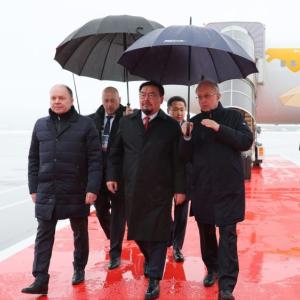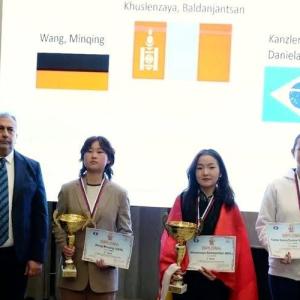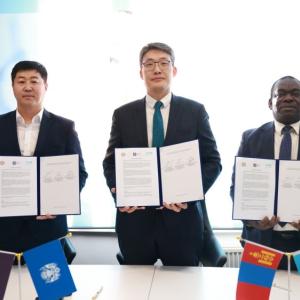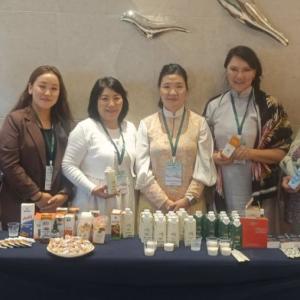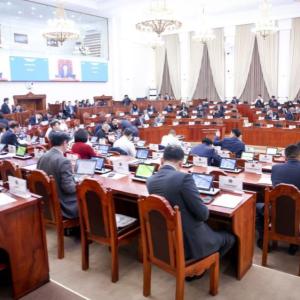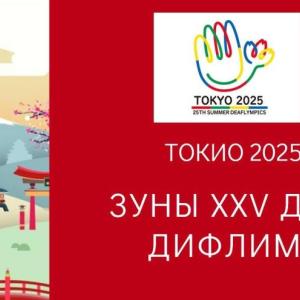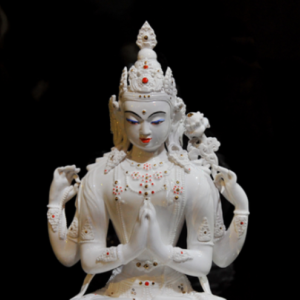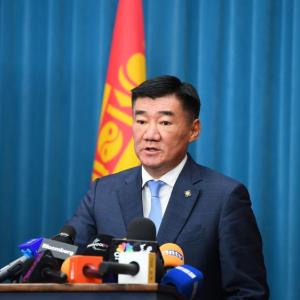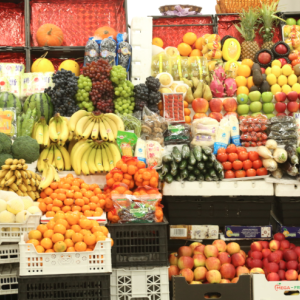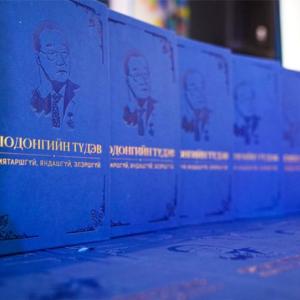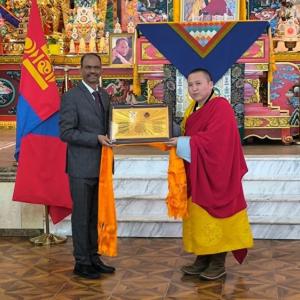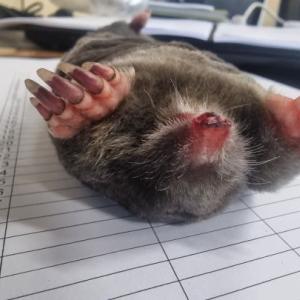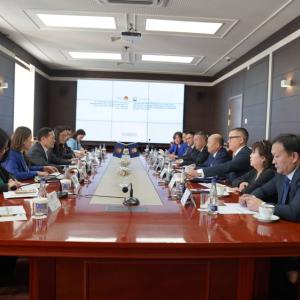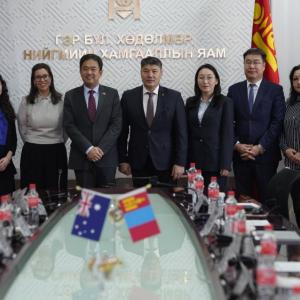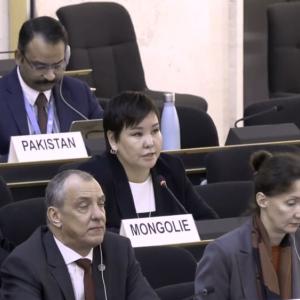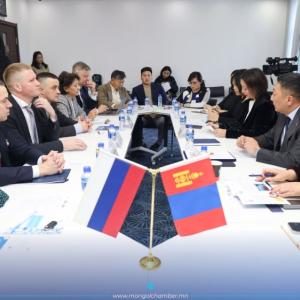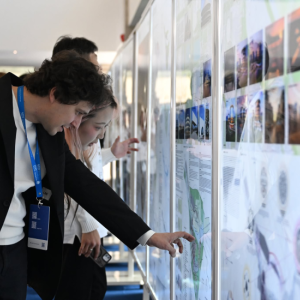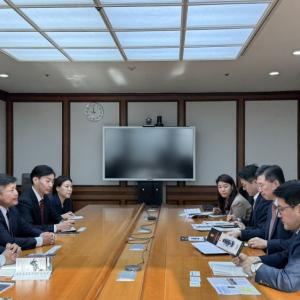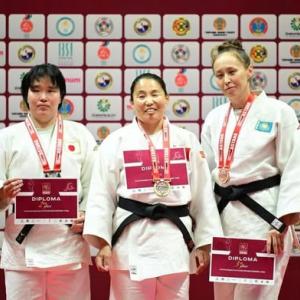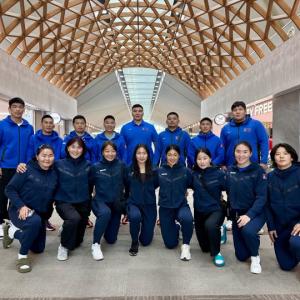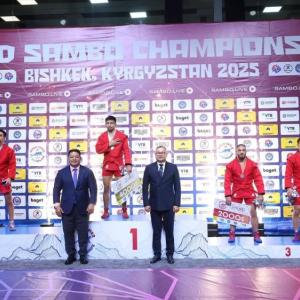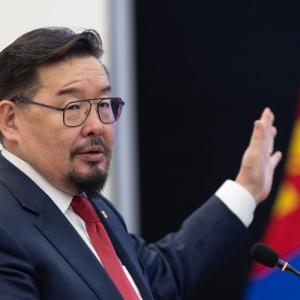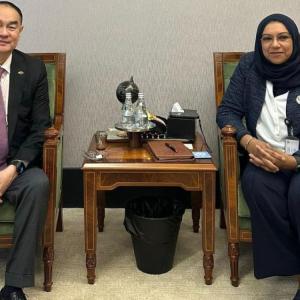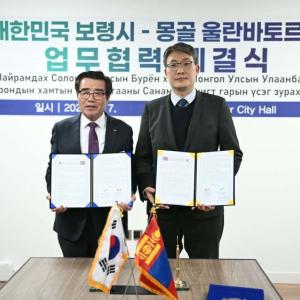Mongolian Customs
Mongolian customs and traditions have grown as part of the development of central Asian nomadic civilization, passed down from generation to generation. They involve psychology, ethics, science, education, religion and family relationships. As in any other nation, Mongolian customs and traditions have their own specific distinguishing features.Mongolians have always considered childrearing and education to be the primary consideration. There is indeed a language association: the Mongolian word humuujil, meaning to educate, to bring up, is related to the words humuun, meaning human, and humuuniig hun bolgoh, meaning to make a man.
Along with a healthy physical upbringing, much attention was traditionally paid to the intellectual and ethical development of a child, even before birth. It was strictly forbidden to frighten a pregnant woman, to make her unhappy or to make her do hard labour. It was also forbidden to pass a pregnant woman when walking, to swear in her presence, or even to speak in a loud voice. Such traditions came from the deep respect given to the unborn child, who might one day become an intellectual, a statesman, or just a faithful person to his family and community. The Mongol saying ‘Holiig ni doroond garyg ganzagand’ translates literally as ‘make the child’s legs reach the stirrups and hands reach the reins.’ This means that the child must grow physically able to help his parents and relatives. Children were told tales and legends, riddles and proverbs, and taught to respect parents, siblings, older people and strangers. Parents also carefully watched how the child learned and behaved, encouraging what they saw as good and condemning what they saw as bad. Children were taught to tend young animals, water horses, collect dried dung, and milk cows from a young age. For healthy growth, children were taught the dangers both of over-eating or being hungry, in addition to good manners. Particular attention was paid to toys and games to help intellectual growth, and Mongolians love to play simple games with children, such as guessing the number of shagai (lamb’s ankle bones) held in the fist; setting the alag melkhii (multicolored frog); anklebone shooting; and shagai shuurekh.
Mongolians said that scolding, intimidation or threats make a child perverse and stubborn, so a caring and loving education was particularly important. However, they said, excessive love and care made a child capricious and spoiled. One proverb says ‘Erkhiig surakhaar berkhiig sur’ (a child should be experienced, not spoiled). Another says ‘Khun bolokh bagaasaa khuleg bolokh unaganaasaa’ (‘a man’s character can seen in his childhood as a horse’s can be seen from the foal’). Mongolians traditionally have strict patterns of greeting. Older or distinguished people were greeted first. Hand-shaking while greeting was unusual, as touching the hand of a respected person was traditionally impolite. They did not consider grasping hands as a sign of affection and friendship, but rather shameful behaviour, an attempt to make the other person impure. For a formal greeting, a man would button his clothing, tighten his belt, put on his hat, extend his right hand and bow three times, touching his forehead with his fingers. Meeting respected guests on the open steppe, he would adjust his clothing, put the palm of his right hand to his heart, and bow. Ordinary people would enquire about work. Meeting a herder with his animals, the visitor might say ‘Sureg amgalan suu shim arvin boltugai’ (‘May your herd be peaceful and milk be abundant’). Meeting a traveller, one might say ‘Altan shar zam tan ulziitei boltugai’ (‘May your journey be lucky and successful’). A greeting for someone sewing might be ‘Uil uran uter turgen butekh boltugai’ (‘May your needlecraft be elegant and completed quickly’). Traditionally, Mongolians have been conscious of formality in well-wishingand greeting. One greeting ceremony is at Tsagaan Sar, once a year, involving the hadag (blue silk band), strictly adhered to as highest and most revered form of greeting; not to observe it is considered disrespectful.
In it, the younger person stretches both hands towards the elders, palms up; the elders do the same with palms down. The younger grasps the elbows of the elder. This can be done with or without a hadag. If with, the open side of a triple-folded hadag should face the elder recipient. If the elder person wants to kiss the younger, the latter should bow the head to be kissed on forehead or cheek; this is not actually a kiss, more a sniff. Kissing with lips is not desirable. There are also unwritten taboos. They encourage respect for other people’s lifestyles or occupations; respect for relationships; respect for the environment, sky, outer space, sun and moon and planets; good behaviour and maintenance of traditions. These oral folk laws have been observed by Mongolians for centuries and are part of the normal home education and upbringing.
- Never look suspiciously at one’s parents, grandparents, family or older people.
- Never throw rubbish into natural water (rivers, lakes) under pain of punishment for despoiling the source of life.
- Never beat a horse, a dog, or any other animal; this is like beating a close friend.
- Do not throw away ash from the stove, as it might cause a fire, endanger the lives of people and animals, and damage the environment.
- Do not leave rope or tether holes unfilled with soil or stones; soil injured by a stake must be re-covered. Open holes may also injure the legs of animals.
- It is shameful to urinate towards the setting or rising sun. In this way one respects the holiness of the sun, the rays of which illuminate the world.
- It is ignorant and inhospitable not to feed a guest. A person who ignores the Mongolian tradition of hospitality is considered mean and stingy.
- Never be unfair or inhumane, arrogant or rude, insult the reputation of elders, ancestors or personal reputations. Mongolians treasure their reputation.
- One proverb says ‘Muu amid yavsnaas ner turtei sain ukh’ (‘Better to die with a good reputation than live with a bad one’).
- Another says, ‘Ner khugarsnaas yas khugar n’ deer’ (‘Better to break a bone than to break one’s reputation’).
Mongolian taboos, restrictions and unwritten laws are inherited from the teachings of Chinggis Khaan in the Code of Law called Ikh Zasag, meant to preserve good management of family and society. For example, every person should first of all ‘correct himself, then bring in order his own house and at the end, his nation.’ The sense of this is that everybody should grow up decently (be educated, just, smart, energetic etc), and be able to take care of his own home. A man who can manage his own matters and rear his children well can then take care of affairs of state. Some astrological taboos also linger, involving for example the time to start a journey, buy goods, start a business, even cut hair.
What Mongols wear
Mongolians like richly decorated clothes, compensating for the simple, ascetic nomadic lifestyle. The harsh climate and life result in attention to the smallest detail of clothing. A medieval traveler wrote, “It is amazing how this nation created clothes fitting all seasons and needs, well thought of and used in many different ways.”
The traditional garment is the deel, worn on both workdays and special days. It is a long, loose one-piece gown with sleeves, a high collar and widely overlaps at the front, girdled with a sash.
Before the 1921 Revolution, each social stratum had its own manner of dressing. Livestock breeders wore plain deels, in both summer and winter. Lamas wore yellow deels with a shawl (orkhimj) wrapped over the chest. Secular feudal lords wore smart hats and silk waistcoats. The deel is not simply a coat, but also a ket or modest covering when going to the toilet on the open steppe. Women especially appreciated the deel as a fashion item, trying to outdo one another in fabric, elegance of cut and originality of trimming. Commonly, there are three sorts of deel, worn according to the season. The dan del is like a dress, cut in one piece from plain cloth without padding. Rural women wear the dan deels all year round, in cold weather adding warm clothes on top.The terleg is slightly padded; and the winter deel is lined with sheepskin or wool. Deels for men and women are of the same cut, but male deels are wider and of duller colours. The everyday deel will usually be grey, brown or another dark colour; the holiday deel will be of brght blue, green or red silk, with a silk sash of contrasting colour, several metres long. The sash is not simply an adornment, but also serves as a soft corset for long rides on horseback.Men used to carry a sheathed knife, tobacco pouch, a flint and a pipe cleaning hook on the belt. Characteristically, the Mongol ian hid his pipe in his boots. The deel collar, front and sleeves are trimmed with leather and coloured brocade, wide or narrow according to taste. Deel buttons, if not commercially produced from decorative stones or silver, are narrow strips of cloth in intricate knots.
Today, city people tend to wear European-style clothing, but in the countryside, modern attire is often inconvenient or impractical. In addition to the deel is the jacket, the khurem, in cold weather worn over the deel. The gutal is a high boot of stiff leather, lined with fine felt, and decorated. The left and right are traditionally the same shape, worn with thick socks of quilted cloth.
Traditional boots have no heel and have turned-up toes.The various ethnic groups have different costumes, and there are an estimated 400 different garments, 20 diferent boots and ten sashes. One of the most colorful and original items of national dress is the traditional headgear. Wearing a hat is still very much the norm in the countryside. Hats differ in shape and purpose, with hats for young and old, men and women, fashionable and everyday, for summer and winter, holidays and ceremonies. Fashion, trimming and colours vary amazingly, depending on the gender of the wearer, his or her social caste, and to which ethnic group he or she belongs. There are over 100 different traditional styles. The common hat for all seasons is trimmed with fur, usually fox, with flaps that can be tied down to keep the ears warm, tied on top in warmer times. Headgear used to indicate status, and the design was also symbolic. The pointed top represented Mount Sumber, the legendary land of the Mongolian forefathers. A knot on top represented the unity of the nation; red ribbons were the sun’s rays and the broad brim represented national inaccessibility. The cone-shaped top (blue or red) had 32 stitches, symbolizing the united 32 tribes. In the middle ages, men and women wore summer hats of plush with a velvet upturned brim and brocaded pointed tops (khilen malgai). The hat was crowned with a fanciful knot, zangilaa, which symbolized power to frighten enemies. Even today, in the countryside, you can see the old national hats, worn especially by women. The holiday headgear is notable for its style and richness of adornment, the lower part of velvet, the upper of red silk.
In summer, Mongolians wore a malgai hat or a flat-topped hat (toortsog) with six gores, and two parts, upper and lower, the upper part of four pieces sewn together. Married women did not wear this hat, only single girls and men. The hair holder was of coral, pearl and mother-of-pearl. The shanaavch, a temple adornment with little silver bells, was attached to the hair holder. Mongolians are admirers of precious stones and ornaments. The female has always been notable for clothes of elegance, with rich adornment. Characteristic the headdress, tolgoin boolt, was of silver, studded with precious and semi-precious stones. Women’s hats were more decorative than men’s, with ribbons studded with turquoise. Mongolians carved in wood and stone; cast bronze; and did embroidery and applique to a high standard in ancient times. Jewelers have long been famed for their mastery in making beautiful objects of gold, silver and semi-precious stones. These traditions have been passed down the generations, with their richness and variety of forms and impeccable artistic taste. Mongolian jewelers still make brooches, pendants, richly ornamented silver drinking bowls, and women’s accessories of precious and semi-precious stones.
Each ethnic group has its own style of deel, distinguished by cut, colour and trim. The Khalkh ethnic group has four parts, largely based on where they settled: Eljgen Khalkh, Eevenhen Khalkh, Tov Khalkh and Borjigon Khalkh. The Khalkh are still the dominant ethnic group in Mongolia, being 80 percent of the population.
Khalkh women traditionally wear a very distinctive del, with extremely wide shoulder padding. The Khalkh female hairstyle is very different from other groups, representing a garuda bird, decorated with 5-10 kg of silver and precious stones. The Khalkh adore red and blue, which symbolise fire and sky.
Khalkh noblemen wore various costumes during the ‘black years’ when Mongolia was controlled by the Manchurians. To differentiate him from ordinary people, the Khalkh nobleman wore a hat topped with a button of rank. His del featured designs of dragons, water and clouds. The dragon’s claws showed his rank. Barga. The Barga costume includes much more silver than other groups: a Barga woman’s head may carry 20kg of silver. The Barga del is different, and their silver ornamentation depicts deer and natural scenes. For special occasions, Bayad women wear a tsegdeg del, with very wide sleeves, trimmed with black velvet.
Bayad people love the colour purple. They attach intricate decoration on the edge of the two hair bags. Bayad men daily wear a white del with a wide black trim and collar. In the winter they wear a hat called a shaazgai.
Buryat costume is unique style and feature among other ethnic groups. Dariganga people’s head ornaments are more richly decorated than those of other ethnic groups, illustrating Dariganga craftsmanship. The del is like that of the Khalkh. The traditional Durvud costume is very different from central Mongolians, more resembling that of the Oirad, and has kept many of the characteristics of the ancient Mongolian costume. The men wear a white leather del, unhemmed at the bottom edge. Women wear a white collar over the del, trimmed with colourful thread. They also do not hem the lower part of the del and add a long sleeveless garment. This absence of a hem is said to symbolise freedom. The most common Durvud hat is called a makhlai, but others are called togrog, duulgal, toiruul, khalvan and khasag. A Durvud wife wears her hair in two braids, each in a thin cotton bag with butterfly-shaped silver ornaments. Khoton.
Khoton women traditionally wear their hair in two braids, contained in a cotton bag called a chachvag, hang down the back. Wonderful items called the palms of the chachvag are hung on the bag. A tassel with jewellery runs from the palms of the chachvag to the lower flap of the del. Myangad men wear a Khalkh-style del, trimmed with black silk and with a red or yellow collar. The wife’s del and ornaments resemble those of the Khalkh, as the Khalkh and Myangad tribes have ancient ties. One special characteristic of Myangad women is the small knife they carry on the right, supposed to indicate a Myangad woman’s strength.
The Torguud are especially noteworthy in that they conserved their traditional costume through the 19th and 20th century. In the warm season, men traditionally wear thin, cotton-padded dels, with hats called jatag, loovuuz or halvan, but now these are mainly worn only in performance of dance and song. Torguud women traditionally wear a small cap with a button on top, decorated with coral. Six- or eight-sided flowers and a moon shape on the front of the cap are made of silver thread. The Torguud costume differs from other ethnic costumes in its narrow chest and sleeves. Both men and women wear felt shoes called tookhuu, soled when wet with thick untanned leather of a cow.
The traditional Uriankhai costume shows differences in class and status, particularly the wealth of the man. The woman’s del has wide sleeves and the costume includes a long sleeveless garment with a narrow chest. Men daily wear a white del, similar to the Khalkh del. The main difference is that the Uriankhai male del has slits down both sides and black spiral patterns above the slits. The chest and lower part of the del are trimmed with wide black silk and lambskin.
Uriankhai men usually wear a hat called a loovuuz, from which hangs thick red silk thread, or a hat called a tookhuu. The men wear their hair in five braids.
The Zakhchin women love pale blue and bluish-green. Both men and women wear a hat called a halban. Zakhchin women traditionally wear a white collar over the del, symbolising a ‘milky’ heart. Scarves in five colours hang on both sides of the long sleeveless garment, symbolising a woman’s soft heart, like waves in the water.
Mongolian cuisine
The Mongolian diet has always been determined by the climate and economy, and is markedly different from other countries. The nomadic life, with the need to move animals to new pastures, gave them a high protein, high fat diet, with lots of meat and dairy products. The focus of Mongolian agriculture has always been cattle breeding. This has to a great extent predetermined the diet, with a lot of meat (mutton, beef, goat, sometimes horsemeat, pork and poultry. There has been a growing taste for farinaceous dishes, rice, piquant and aromatic roots, greens, and especially multi-bulbed onion and garlic. Fish and fish products are not and have never been generally popular.
In summer, when milk is abundant, Mongolians prepare products that can be stored for a long time. These include aruul (a kind of dried cottage cheese); byaslag and eezgii (two kinds of cheese made from sour milk); tsagan tos (made from the skim of milk); and shar tos (melted butter). Fresh milk was usually drunk unskimmed, added to tea, or made into the popular clotted sour milk. Country people still make these products, and city people still consume them. In the countryside, food is usually cooked once a day, unless guests arrive. In the morning and afternoon, milk tea is drunk with boortsog (butter biscuits fried in oil) and meat boiled the night before.
Traditionally, food is only cooked for summer, mostly boiled meat and broth, with noodles or rice added to taste. In the daily country diet, milk products are very popular, like fresh milk, sour clotted milk, yoghurt, cheese, curds and airag (a drink made from fermented mare’s milk, also known as koumiss). So: dairy products in the summer, meat for the rest of the year, with preference for mutton. In the warmer season, when fewer cattle were slaughtered, dried meat (borts) was eaten.
The nomadic way of life and the climate have given rise to ways of preserving meat. The most widespread method is air-drying: meat is cut into long strips and hung in the shade. It dries very quickly, becoming so hard that you cannot cut it with a knife, so before use, it is powdered and put into boiling water. For the usual meal, there are hors-d’oeuvres of a cold dish, often cooked lamb or beef, with condiments.
On special occasions, particularly Tsagaan Sar (lunar New Year), a family will have a saddle of mutton as the dish of honour, carved into thin slices and given to guests.For the first course, the host serves noodle or meat soup with scones, broth with meat dumplings or mushrooms, thick soup, meal soup, etc. The second course is usually also of meat - buuz (a sort of steamed meat dumpling) and khuushuur (flat ground meat in unleavened pastry) are very popular. There is one exotic dish which has been eaten with relish from time immemorial: boodog, the whole carcass of a goat, with the entrails and bones first taken out through the throat. The carcass is filled with red-hot stones and the neck tied tightly, so the meat is cooked from the inside. Khorkhog is another special dish. The carcass is put in a tightly- closed cooking pot, which is surrounded with red-hot stones. The innards of sheep and goats are used in making sausage. Thoroughly-washed intestines are stuffed with finely-chopped organs, fat, blood, with added spices, salt, onions or garlic. It is worth remembering that most country Mongolians know how to make a tasty dish from sub-products, and there are over a hundred of such dishes. The favourite beverage is milky tea, though they also drink tea with rice, meat, meat dumplings and rendered fat. In some regions the tea is salty, elsewhere brewed with bone broth.
The situation has been changing as the country becomes a more advanced agrarian-industrial state with a more dynamic economy and as culture is influenced by the west. One change has been the introduction of cereals, vegetables and fruit into the diet. The expansion of crops made it possible for local farmers to produce enough grain to meet national demand for flour and flour products. Vegetables and fruit cultivation have also been developing fast, while poultry farming, pig breeding and beekeeping have appeared. While meat is still an important part of the diet, vegetables, fruit, rice, eggs, confectionery, cooked meats and fish have also become part and parcel of the modern diet. Tasty, diverse and nutritious foods are evidence of greatly improved living standards. Cafes and fast food outlets offer a choice of not only national dishes, but also foreign dishes. Along with the traditional Mongolian cuisine, relatively new food products have become an integral part of the Mongolian diet.
Religion
Worship of nature.
Worship of nature is thousands of years old and is reflected in the tales and legends of the Mongolian people. Since the disintegration of the patriarchal system in Central Asia, reverence and respect for elders and for natural phenomena flourished as a form of worship. Offerings and sacrifices were made to the sun, moon, stars, planets and heavenly bodies, earth, sky, mountains and hills. This has been immortalized in pictures on rocks and stones found all over the vast steppe lands. The offerings were directly related to the nomadic lifestyle of those engaged in livestock herding.
Idolization of holy spirits
The idolization of holy spirits was the earliest faith of Mongolians. This became the idolizing of deer, horses, cattle, wolves and falcons in the periods of the Hunnu, Sumbe, Kidan, and Pan-Mongolian tribes. Ancient rock pictographs show deer, goats and bears as holy idols. The most popular objects of idolization were Burte Chono and Goo Maral, closely related with the reverence and worship of heaven and earth. The worship of fire was also one of the spiritual beliefs of the Mongolians, related to its purifying power. Stemming from such an admiration of fire, a number of customs and traditions appeared. For example, it was forbidden to throw dirt on or stick a knife into a fire. It was also forbidden to spit into a fire or to jump over it. The ceremony of fire offering was very popular among western Mongolians. This was conducted in the presence of the whole settlement, when the breastbone of a fatty sheep, was offered to the fire. The tradition still survives. In the early morning on the first day of Tsagaan Sar, it is traditional for a family to make an offering by throwing fat into the fire and burning juniper incense. An ovoo (cairn) is tall piles of rocks and tree branches roughly conical in diameter, about 6-10 feet. When passing by ovoo travelers are required to walk around it three times and place a rock on it. In doing this not only is a person showing respect for the spirit, which would be the least required of him, but by adding to the spirit’s power symbolically by adding the rock he is receiving wind horse and good luck for his journey.
Shamanism
The worship of wild animals was replaced in medieval times by the abstract idea of an eternal heaven. The understanding was that there existed a god who supported the world, creating an earth into which the shamanist faith could be born. The eternal sky is supreme and receives devotion from the shaman. The sky is male and the earth female. The eternal sky was thought to be the supreme universe, containing many heavens, both good and bad. The Asar heaven has 99 heavens, of which 55 are western, considered to be good for man, and responsible for good deeds. The 44 eastward heavens are considered as angry and arrogant, responsible for bad deeds. The shamans believe that once upon a time these heavens were united under the rule of the powerful Asura. When Asura died, the heavens were divided in two against each other. The western heavens leader was Khan Khurmast; leader of the eastern heavens was Ataa Ulaan Tenger. Every heaven was closely associated with a natural phenomenon, ruling over an aspect of human life, destiny and fate. This is similar to the Greek cosmology, with gods like Zeus. Hail Heaven was the ruler of the thunderstorm; White Heaven of Zad was the ruler of rain; Red Fire Heaven was the ruler of drought and dzud; the Black Daughter Heaven ruled over humans and young animals; the White Old Man ruled over livestock; the Manakhan Heaven protected hunting and trophies; the Daivan Blue Heaven inspired artisans and craftmanship. Male and female shamans enter into a trance, summoning the heavens and acting as a mediator between people and the sky. A male shaman was called Zairan, and a female shaman Udgan. Black shamans contacted the bad spirits to wreaked havoc, while white shamans contacted good spirits and performed good deeds. Shamans were considered to be possessors of extraordinary spiritual power. Mongolian shamans of early years were said to have the power to call for rain from cloudless skies, cause thunderstorms, make rivers flow in the wrong direction, overcome difficulties in time and space and predict the future. During Manchu domination, Mongol shamans were said to have killed with lightning thousands of Manchu warriors. All Mongolian banners followed shamanism. Modun, Khaan of the Hunnu, the first Mongol state, would bow to the early morning sun and the evening moon. There were many shamanist monasteries and temples in the Hunnu empire, in which the Hunnu khaan was deeply respected as Tengeriin Huvuun (Son of Heaven). In state ceremonies, ritual shamanistic prayers were used, seeming to imply a move towards making shamanism the state religion. Through the worship of the sun, moon, earth, rivers, lakes and elders, and with the sacrifice of sheep and cattle, the Sumbe also followed shamanism. The Toba tribe conducted an offering of seven or 49 wooden human figures in shamanist rituals. Jujans were followers of shamanism, and male and female shamans had important positions in Jujan khan’s palace. The Tureg tribe also believed in shamanism, and conducted shamanistic rituals, worshipping the blue skies and the earth. The Kirghiz in the steppes performed shamanistic rituals and worshipped the gods of land and water. Uighurs also worshipped the sky and the land and followed shamanism, making offerings to the mountains and building ovoos. During the Mongol Empire, shamanism was respected as a state religion. When Chinggis Khaan united the Mongol tribes, one of his close associates was a shaman named Dev Tenger. The shaman was important in state ceremonies or when warriors were sent to battle. Performing an offering to an ovoo (sacred monument) and predicting the future were the most popular forms of shamanism in Mongolia. It is still very common in rural Mongolia to find the performance of shamanist rituals to mountains and water, asking for rain as well as involvement in the Naadam feast. Fortune-telling from a sheep’s shoulder-bones is still common. It is plain that shamanism and its rituals to evoke the spirits has greatly influenced the intellectual culture of Mongolia.
Religion in the Mongol Empire
The most interesting period of religious attitudes was when Chinggis Khaan founded the Mongol Empire. He and his successors worshipped holy spirits in shamanism, and shamans who worshipped the eternal blue sky were never banished by other religions. Kharakhorum, the capital of the Mongol Empire, was a world cultural, religious and political centre, where Buddhists, Christians, Nestorians, Muslims and Confucians set up temples and monasteries with their own governing centres and authorities. In Kharakhorum, along with shamanism, there was a Buddhist lamasery, two mosques, one Christian church and 12 temples of other religions. From the time of Chinggis, khaans and nobles never discriminated against religions of conquered nations, but treated all them equally. Khubilai Khaan celebrated in his own country the festivals of various religions. It is said that in the Yuan dynasty, people observed festivals such as Christmas and Easter, as well as Muslim, Buddhist and Jewish celebrations. Khubilai Khaan said, “These holy saints are deeply revered in every corner of the world.” Historians claim that the Mongols were tolerant of all faiths in states that submitted to Mongol rule; that khaans and nobles who rode across half of world never discriminated on the basis of belief. It may be that this was part of the reason that Mongolia conquered and ruled half the known world. There are few other examples of peaceful co-existence of different religions as in the Mongol Empire. Polish historian V. Kotwich said, “In the 13th century, the Mongols brought about world peace.” He pointed out that Marco Polo benefited from the Pax Mongolica to travel safely from Venice through Asia and back home. ‘His adventures became the inspiration for explorations of European navigators’ (from World History, volume 1, 4th edition, 1996, page 170).
The spread of Buddhism in Mongolia
From early times, the Mongols interacted with Buddhism culturally and spiritually. It is believed that Buddhism developed during the Hunnu period, the earliest Mongolian ancestors. Historians conjecture that sacrifices were made in the southwest of the Hunnu empire to a three-metre tall golden Buddha. Mu Yin, leader of the Sumbe Mu Yin banner of the Mongol nation, ordered, “We must accumulate merits by performing good deeds and make them grow by performing meritorious acts.” History says that the Nyrun (4th-6th centuries AD) state made Buddhism its state religion. A lama named Dharmapria in the west (the present Gansu) in 420 became a Buddhist teacher in the Nirun state. Buddhism spread through Mongolia from the middle of the Turkish khanate, after the Nyrun, up to to the end of Uighur state (9th-11th century AD). The Kidans, before their own empire emerged, set up the first Buddhist monastery in 902 AD. Chinggis Khaan, after founding the united Mongol Empire, wrote a letter to Tibetan Lama Sajiin Khambo in 1206. It read, “Although I want to invite you, my state affairs are not finished yet. Pray for me.” In following letters, Chinggis Khaan exempted the superior of the Tibetan religion from tax. Some of Chinggis Khaan’s ministers were Buddhist religious scholars. Encouraging the Buddhist religion, Ugedei Khaan (1229-1241) began a big Buddhist sub-urga in Kharakorum, completed in 1256 in the reign of Munkh Khaan. Buddhism flourished in the Mongolian Yuan dynasty, whose founder, Khubilai Khan (1215-1294) followed the Mongol khaan state policy to revere and support Buddhism. He invited Pagva Lama Lodoijaltsan of the Tibetan Sajii sect to his palace in 1260 to write books, and promoted him to head lama of Yun state in Shand city, handing him the seal as state teacher. Khubilai’s successors welcomed lamas as promoters of the Buddhist ideology, granting them the title of state teacher. The most sophisticated Mongolian period was the 16th century, a negative time for the spread of Buddhism. In the second half of the 16th century, supported by Mongolian leaders and religious scholars and by Tibetan religious leaders, Mongolian Buddhism revived for the third time.Among significant figures of this revival were Undur Gegeen Zanabazar of Khalkh, Zaya Pandida Luvsanperenlei, Zaya Pandida Namkhaijamts, Enlightened Lama Choizad, Neij Toi, Pandida Ayush-gun of Huhhot, Altan Khan of Tumed, Avtai Sain Khan of Khalkh, Ligden, Galdan Boshigt khaan of Oirad, and Tumen Sain Noyon Khan.
Did you know...
The Fourth Dalai Lama, Yondon Jamts (1589-1616), was a Mongolian? He was born as a grandson of the Mongolian king Altan Khaan and was given perfect knowledge and very special care until he died in a monastery at Braivan, Central Tibet.
Altan Khan of Tumed (1507-1589) invited Tibetan lama Yondonjamts to Mongolia and bestowed on him the title of Ochirdari Dalai Lama, giving birth to the present-day title of Dalai Lama. From then, a number of khaans encouraged Buddhism to help reunite their disintegrated nation in spiritual devotion. Ligden Khutagt Khaan (1592-1634) ordered the translation of the Ganjuur and Danjuur shastri sutras into the Mongolian language (1628-1629). Thirty-five scholars led by Gungaa Odser carried out this work. Mongolians began actively spreading Buddhism. With the translation and explanation of works by Indian and Tibetan scholars, the learned lamas of Khalha and Oirat in particular wrote books on religious philosophy. Many works composed by renowned scholars like Nagarjuna, Asanga, Vasuvandu, Dignaga, Dharmakirti and Dharmottara were translated into Mongolian language. Over 200 Mongolians also wrote several hundred religious books in Tibetan. The Buddhist religion was strong in this country from the second half of the 17th century, since the foundation of Ikh Huree. This was the largest cultural centre for hundreds of years, not only for Mongolian Buddhists but for Buddhists round the world. The religious school of Gandan, incorporated in 1739, produced many highly educated lamas, renowned throughout Asia. There were thousands of monasteries, temples, prayer places and libraries. Buddhist temples and monasteries were cultural and intellectual centres. Buddhist religious knowledge and intellectual development in Mongolia, until the early 20th centuries, was among the best in the world. Many wise men penetrated the philosophic depth of Buddhist religious doctrines. Buddhism had the role of an official ideology, significantly strengthening Mongolian relations with highly civilized oriental countries. Buddhism gradually replaced indigenous shaman traditions and rituals, introducing the cultural achievements of India and Tibet into the wild steppe lands and playing a decisive role in developing culture and civilization.
Buddhist artistic masterpieces are kept in Gandan monastery and other temples, monasteries and museums. Doctrines of the Buddhist philosophy deeply impacted on Mongolian culture, traditions and customs.
Buddhist doctrines and teachings
The doctrines and teachings of Buddhism aim at perceiving and understanding the world. Mongolian Buddhist scholars believed the teachings and theories of Ikh Huleg (the great wheel) to be based on the Choi Doctrine and offered deep respected. Buddhist teachings aim to develop wisdom, understanding of the universe and nurturing of compassion, love, kindness and amiability. This involves recognition and perception of the force of wisdom, of the essence of the inner and outer worlds of a human being, and reaching the state of Bodhisattva by purifying oneself in mind and language. Buddhism aims to perfect the mind and purify the soul. Buddhist philosophy rejects the idea of a mighty master of the world or heaven. It says that a human being, if he attains enlightenment, can become a god (Burkhan), and that the Burkhan essence is in every human being. This attainment would not be unusual or unacceptable, and if a person attains enlightenment and the state of Nirvana, this would not mean they had reached something supernatural and mysterious. Buddhist philosophy says that only by one’s own wisdom and power of one’s soul can one get free from the bonds and ties to earthly affairs. Only by purifying the soul, language and body can one reach enlightenment and the state of Bodhisatva. The essence of Buddhist teaching lies in helping people reach this state, developing inner and outer abilities. Buddhist teachings have two doctrines, one for religious dogma and the other for religious tenets. The doctrine of Buddhism, which spread through Mongolia several times, was a treasure trove of human wisdom and of the inner world. Mongols call Buddha the Burkhan (Perfectly Enlightened One).
Present situation of Buddhism
Since democracy arrived in 1990, and as a result of the 1992 Constitution, Mongolia is once again enjoying freedom of religious belief. Religious beliefs and denominations other than Biddhism have begun to penetrate Mongolia, seeking soil to for their doctrines. The Constitution gives citizens freedom of worship, and people can choose freely which religion to follow. The legal basis was laid for a revival of traditional religion and for other religions to coexist. Provision 9 of the Constitution says, “The state shall respect the church and the church shall honour the state. Relations between state and religion will be regulated by law.” The State Great Khural adopted a law governing the relationship between religion and the state in 1993. Many monasteries and temples destroyed in the 20th century have been restored and new ones built in the last ten years. In a short period of time, over 150 monasteries and temples have been revived, and there are now over 3,000 monks. Astrology also retains its ancient influence and is used by many people to determine auspicious dates for major undertakings. Buddhist monks and professional astrologers cast horoscopes according to which the day and hour to embark on a trip are decided. Purchasing land, starting a new business, or opening a shop are also, often subject to an astrologer's calculations, and few couples would agree to be married without first determining the suitability of their union and the most auspicious day and minute for the ceremony.
Today in Mongolia, there are over 250 places of worship for religious denominations like Buddhism, Christianity, Islam, Shamanism, Ananda Marga, Bahai, Mooni, Bombo and Krishna sects. The attitude of the state can be described as tolerant. A survey revealed that there are 13 times as many Buddhists as believers of all other faiths. However, Mongolian Buddhists work closely with the other denominations from Asia, Europe and the US. Khamba Lama D. Choijamts of Gandantegchilen monastery, the centre of Mongolian Buddhism, was in 2003 elected to lead the Asian Buddhists Conference for Peace. Prominent Mongolian Buddhists have been elected to leading positions in the Asian Buddhist Federation. The Muslim religion is followed by Mongolian Khazakhs, and there are six mosques in Mongolia.
 Ulaanbaatar
Ulaanbaatar





